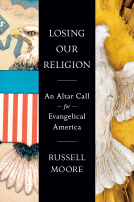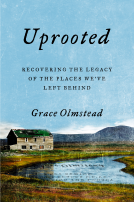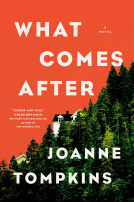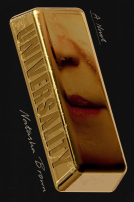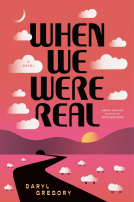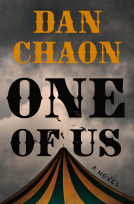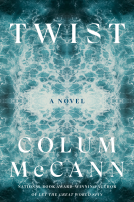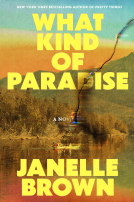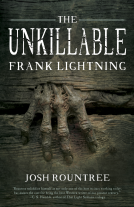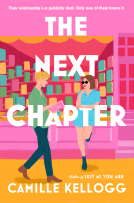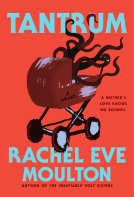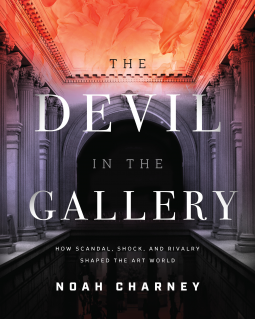
The Devil in the Gallery
How Scandal, Shock, and Rivalry Shaped the Art World
by Noah Charney
This title was previously available on NetGalley and is now archived.
Send NetGalley books directly to your Kindle or Kindle app
1
To read on a Kindle or Kindle app, please add kindle@netgalley.com as an approved email address to receive files in your Amazon account. Click here for step-by-step instructions.
2
Also find your Kindle email address within your Amazon account, and enter it here.
Pub Date Sep 15 2021 | Archive Date Sep 08 2021
Talking about this book? Use #DevilintheGallery #NetGalley. More hashtag tips!
Description
Scandal, Shock and Rivalry Can Be an Artist’s Best Friends
Scandal, shock and rivalry all have negative connotations, don’t they? They can be catastrophic to businesses and individual careers. A whiff of scandal can turn a politician into a smoking ruin. But these potentially disastrous “negatives” can and have spurred the world of fine art to new heights. A look at the history of art tells us that rivalries have, in fact, not only benefited the course of art, from ancient times to the present, but have also helped shape our narrative of art, lending it a sense of drama that it might otherwise lack, and therefore drawing the interest of a public who might not be drawn to the objects alone. There would be no Sistine Chapel by Michelangelo had rival Raphael not tricked the pope into assigning him the commission, certain that Michelangelo, who had never before worked with frescoes, would botch the job and become a laughing stock. Scandal and shock have proven to be powerful weapons when harnessed and wielded willfully and well. That scandal is good for exposure has been so obviously the case that many artists have courted it intentionally, which we will define as shock: intentionally overturning expectations of the majority in a way that traditionalist find dismaying or upsetting, but which a certain minority avant-garde find exciting. From Damien Hirst presenting the public with a shark embalmed in formaldehyde and entombed in a glass case to Marcel Duchamp trying to convince the art community that a urinal is a great sculpture shock has been a key promotional tool. The Devil in the Gallery is a guided tour of the history of art through it scandals, rivalries, and shocking acts, each of which resulted in a positive step forward for art in general and, in most cases, for the careers of the artists in question. In addition to telling dozens of stories, lavishly illustrated in full color, of such dramatic moments and arguing how they not only affected the history of art but affected it for the better, we will also examine the proactive role of the recipients of these intentionally dramatic actions: The art historians, the critics and even you, the general public. The Devil likes to lurk in dark corners of the art world, morphing into many forms. Let us shed light upon him.
Noah Charney is an internationally best-selling author of more than a dozen books and a professor of art history specializing in art crime. His novel, The Art Thief, was a bestseller in five countries and is translated into 17 languages. His The Art of Forgery, Stealing the Mystic Lamb and Slovenology were international bestsellers. His book Collector of Lives: Giorgio Vasari and the Invention of Art was nominated for the Pulitzer Prize. He appears occasionally as a television presenter, with shows for BBC, National Geographic, among many others, and is in demand as a speaker, having been a finalist to be a TED Fellow and with recent talks at the National Gallery and the Metropolitan Museum of Art. He is currently writing a television series for HBO Europe, and writes regularly for the Guardian, the Washington Post, Salon, the Observer, and many other top magazines and newspapers. Trained in art history at The Courtauld Institute, Cambridge University, and University of Ljubljana, Charney has taught for many years, for Yale and Brown University, and in Cambridge, Florence, Rome, and Ljubljana. Charney is now a professor of art history at the American University of Rome and at University of Ljubljana in Slovenia, where Charney has lived for many years.
A Note From the Publisher
This is a set of uncorrected page proofs. It is not a finished book and is not expected to look like one. Errors in spelling, page length, format and so forth will all be corrected by the time the book is published several months from now. Photos and diagrams, which may be included in the finished book, may not be included in this format. Uncorrected proofs are primarily useful so that you, the reader, might know months before actual publication what the author and publisher are offering. If you plan to quote the text in your review, you must check it with the publicist or against the final version. Please contact reviews@rowman.com with any questions. Thank you!
Available Editions
| ISBN | 9781538138649 |
| PRICE | $45.00 (USD) |
Featured Reviews
 Mike D, Reviewer
Mike D, Reviewer
I’m actually surprised to be the first to rate and review this book. It’s been waiting on my Kindle for quite a while since grabbing it from Netgalley with a goal to further my fine arts self education. It’s by a renown author and art expert and professor, who specializes in art crime. It’s reasonable in length, accessible in style and even has art in it, albeit viewing some of the world’s greatest art on a small black and white screen is far from ideal.
I love art. Enjoying it in museums (one day, again) and reading about it (an anytime pleasure). I’ve not too long ago read a book about art frauds for which this author provided a preface. This book takes a different approach, specializing in famous scandals and rivalries, from the well known (legendary really in that respect) figures to the lesser known but nevertheless bitter feuds and salacious skeletons in closets. And, of course, all the great works these rivalries have inspired. Consider, Sistine Chapel…Raphael’s backfired trick on Michelangelo. That’s two Teenage Ninja Mutant Turtles right there. In fact, this book makes an excellent case for why Raphael should have been the Donatello of the team, it’s a generational thing. That’s just one of the great many randomly awesome things you’ll learn from reading this book. It isn’t just about art, it’s about psychology and sociology. Things that explain why the two of the world’s wealthiest artists produce art in factory like environments. And graffiti wars. And collector’s markets.
Whether you’re interested in art for art’s sake or as a business investment or as a conversation subject, whether you’re passionate about the great masters’ lives or works or even if you just like a good scandal or many…there’s something in this book you’ll enjoy. I enjoyed all of it. It was very much like attending an engaging erudite and entertaining lecture for the sheer pleasure of self edification. Whatever madness coursed through artists’ veins, whatever wildness guided their lives and their brushes, the beauty they’ve given us is undeniable. And this book it for people who can’t resist a good behind the scenes story. Recommended. Thanks Netgalley.

